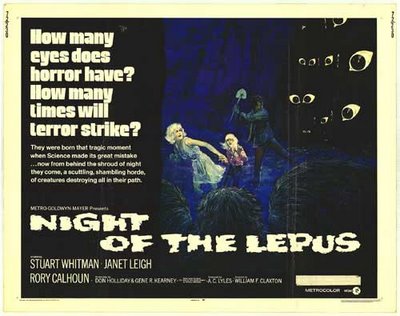When my daughter was very small it was common for friends and family, which had grown children, to comment on how quickly children grow. It was impossible for me to imagine and even keep track of all the milestones that my daughter would pass in her first year, let alone the twelve other years that have sped by. In my minds eye I can see, recall and recite memories of her first words, her tentative toddler steps, watching her learn to tie her shoes when sitting next to a teenager during church, and seeing the excitement in her eyes as she picked out and purchased a polka dotted party dress for her first middle school semi-formal. All these seasons of growth included physical, mental, emotional and spiritual changes that can be complicated to track and document. When observing the physical growth of a child it is equally important to be aware of the invisible internal development that is taking place inside of the inner person. Inner development of mental and emotional growth includes the maturation of faith development in specific stages.
Accessing the faith development of an individual is similar to looking at a cube and trying to observe all sides from one point of view. No matter which angle you look, you cant see all sides of the block at once and that is just taking into consideration what is visible to the naked eye. Freud and Piaget laid the initial groundwork for theories of stage development, which were continued by Eric Erikson and his studies of the eight psychosocial stages. Kolbergh also added to the study of individual development by focusing on six moral development stages. The studies of each of these psychologists help to view specific sides and possibilities in the moral development of individuals. It is through continued study that greater understanding can be gained and developments silhouette can be viewed more clearly in order to encourage deeper maturity.
Dr. James W. Fowler III, C.H. a professor of Theology and Human Development at Emory University, (http://en.wikipedia.org/wiki/James_W._Fowler) and prolific writer of faith development research studies, speaks passionately about the deep roots of faith foundations present in each person.
I have the conviction- that as part of the planfullness and intention manifest in creation, human beings are genetically potentiated for partnership with God.
Fowler, James W., Faith Development and Pastoral Care, (Philadelphia PA: Theology and Pastoral Care Series: Fortress Press, 1987)
Religious philosopher Blasé Pascal (1623-1662) stated that, in every heart there is a God shaped vacuum. Fowler makes a divine connection to mankinds need for a deity or god and refracts Pascals idea hundreds of years later. Fowler expands upon Pascals statement and develops his ideas of faith development through the research of many psychologists before him. (Freud, Piaget, Erikson and Kolberg.)
The work of pastoral specialist James Fowler integrates the stages of human faith development with the more secular stages of cognitive development. These theories are established on four assumptions.
1 We are created to strive towards an ever deepening and evolving understanding and communion with the Divine.
2 We live with freedom of choice, thus this capacity for communion with God, may also be thwarted and used to draw our focus and actions away from Deity.
3 Our faith and identity is always formed within the context of our communities and their symbols, languages, rituals and liturgies.
4 Our faith evolves and emerges gradually through difficult sequences of developmental construction. We begin as creatures unconsciously embedded in and defined by the environments in which we dwell, only through time do we become conscious of our separate identities as beings with the capacity to differentiate.
In addition, Fowler states that faith is a construing of the conditions of existence. It is a special kind of construing, however, for it attempts to make sense of our mundane everyday experience in light of some accounting for the ultimate conditions of our existence.
The embodiment of faith involves three aspects.
1 Patterned Knowing: belief or systematic theology
2 Patterned Valuing: devotion, commitment or participation
3 Patterned Meaning: narrative story or liturgy.
Fowler presents faith development in seven stages:
1. Undifferentiated or Primal Faith (Infancy)
2. Intuitive Projective Faith (Early Childhood)
3. Mythic-Literal Faith (School Years)
4. Synthetic-Conventional Faith (Adolescence)
5. Individual Reflective Faith (Young Adulthood)
6. Conjunctive Faith (Mid-life and beyond)
7. Universalizing Faith
.(Fowler, James W., Faith Development and Pastoral Care, (Philadelphia PA: Theology and Pastoral Care Series: Fortress Press, 1987)
Accessing the faith development of an individual is similar to looking at a cube and trying to observe all sides from one point of view. No matter which angle you look, you cant see all sides of the block at once and that is just taking into consideration what is visible to the naked eye. Freud and Piaget laid the initial groundwork for theories of stage development that were continued by Eric Erikson and his studies of the eight psychosocial stages. Kolbergh also added to the study of individual development by focusing on six moral development stages. The actual development if faith is a life long process that occurs though stages of seasons of life.
Ecclesiastes 3
A Time for Everything
1 There is a time for everything,
and a season for every activity under heaven:
2 a time to be born and a time to die,
a time to plant and a time to uproot,
3 a time to kill and a time to heal,
a time to tear down and a time to build
( NIV Bible, Copyright © 1973, 1978, 1984 by International Bible Society)
Faith is often associated with a particular type of belief or the direct questioning of what and individual may believe in, but jumping from the concept of faith to belief actually skips over some primary stages in faith formation. According to Fowler, Faith... is the relation of trust in and loyalty to the transcendent (God) about which concepts or propositions beliefs are fashioned. (Stages of Faith, Fowler/1981 Harper Collins Publishers, NY/ pg 11)
It could be easier understood by surmising that if faith were the feet of moral development then religion/belief could be considered the avenue of progress. Faith and religion are complementary, but they are not in essence the same entity.
Faith is meant to be religious. But in fact, faith struggles to be formed and maintained in many persons today who feel they have no useable access to any viable cumulative religious tradition. (Stages of Faith, Fowler/1981 Harper Collins Publishers, NY/ pg 10). The Hindu word sraddha means: to set ones heart on. Faith and sraddha are essentially one and the same. The setting or the focus of a persons heart is or becomes their object of faith. This is where the lifetime of development comes into play, as many times individuals will attempt to place something or someone besides god or deity into the god-shaped space in their heart. (Stages of Faith, Fowler/1981 Harper Collins Publishers, NY/ pg 10).
The foundations of faith are composed of what the heart of the individual sets their heart upon. If a person sets their heart upon material gain that is the god in their life. The conflict of faith in misplaced deity makes an unsteady foundation to build ones life upon. The process of faith development is not meant to be free of internal conflict, but a continual giving over of an individuals life to God is the means for genuine progress to higher stages of faith development. Faith leads to belief and generally an association with a religious system to assist the individual in faith development, relational support from other members of a belief system and matures with conscious decisions to follow the desire of their heart. Just as a parent is amazed to see the development of their child, we can also be amazed by the invisible interior changes that faith can impress upon an external world.
Faith fills the void of the heart that can be made complete with nothing else. Faith is the many sided building block that is composed of commitment, loyalty and trust. Faith is the foundation that supports a lifetime of growth. Belief gives the avenue to walk on, but the road cant be traveled without sturdy feet of faith.


